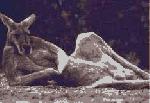Yes, and therein lies the rub.Originally Posted by Steve Schell
I and other friends have found that with large horn systems it hasn't been possible to get a really good set of correction filters due to room interaction. I have chosen not to use any correction filters and I do all of my corrections manually... with a little help from my pal CLIO. The results are quite impressive. When used properly the DEQX PDC2.6 is a great tool... but as Steve said it is a bear... especially at first.
Widget




 Reply With Quote
Reply With Quote



 Bingo.
Bingo.
 I truly can't believe that.
I truly can't believe that.